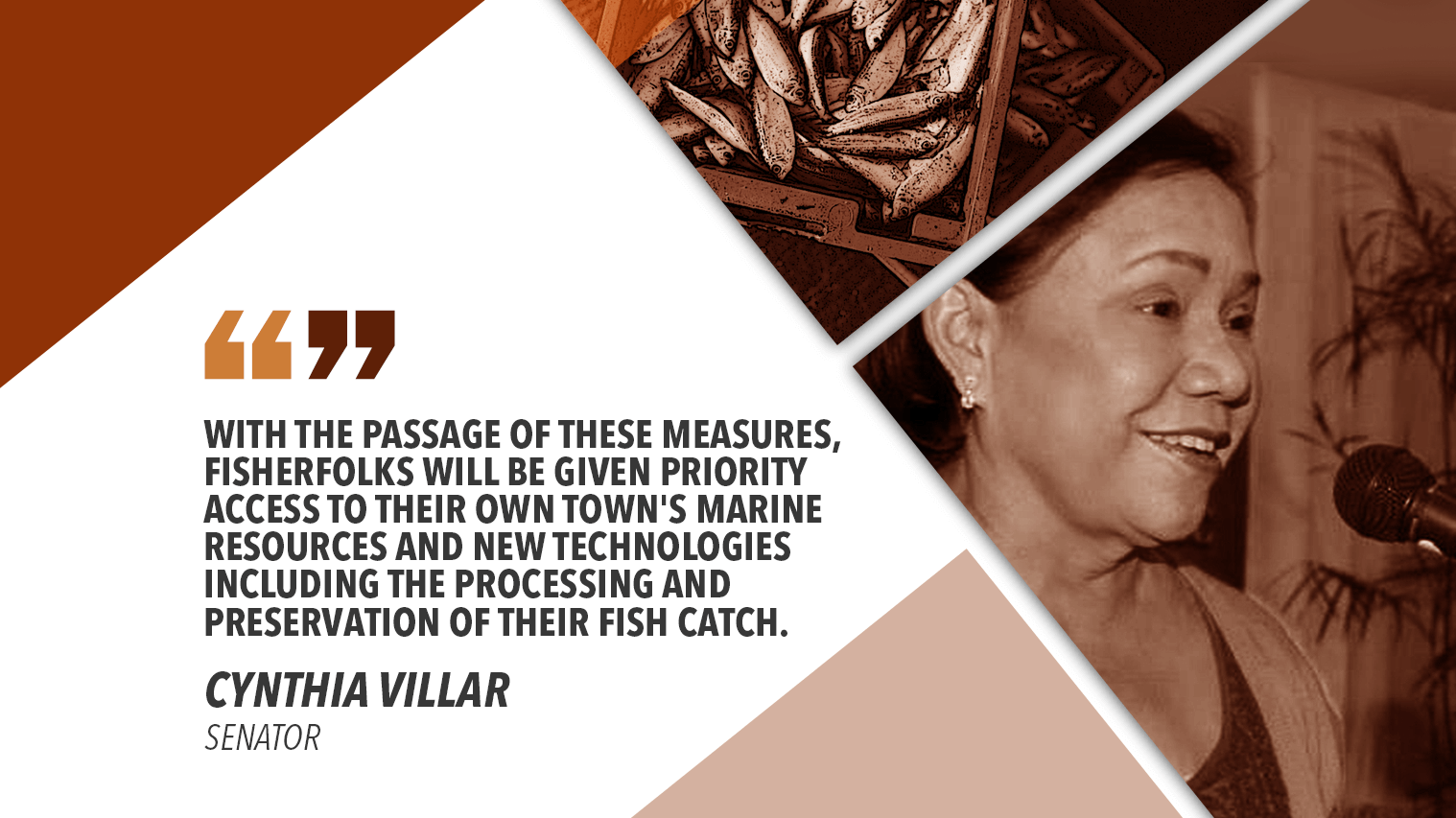The Senate has approved on third and final reading three measures which seek to establish fisheries research centers in the country to address the declining fish population and high poverty incidence among the more than 1.5 million coastal fisherfolks in the country.
Unanimously approved were House Bill 7491, which seeks to establish a provincial fisheries and aquatic resources training, development and product center in Aklan; HB 7500, which seeks to establish a freshwater multispecies hatchery and research center in Balo-I, Lanao del Norte; and HB 7484, which seeks to establish a fisheries research center in Abulug, Cagayan.
Senator Cynthia Villar, chair of the Senate Committee on Agriculture and Food, pushed for the passage of the measures which she said “will help resolve overfishing and dwindling fish catch for the small fisherfolk in these areas.”
“This will help resolve overfishing and dwindling fish catch.”
With the passage of these measures, Villar said fisherfolks will be given priority access to their own town’s marine resources and new technologies including the processing and preservation of their fish catch.
The seasoned legislator, who was given a fresh mandate for another six years by more than 25 million Filipinos during the May midterm elections, was also instrumental in the establishment of similar facilities in 14 other provinces in the country, namely, Quezon, Albay, Surigao del Sur, Agusan del Norte, Surigao del Norte, Sultan Kudarat, Cebu, Catanduanes, Zamboanga del Norte, Leyte, Southern Leyte, Biliran, Eastern Samar and Northern Samar.
“Building of more facilities to improve our fish farming capabilities is one of the long-term solutions we need in order to improve our productivity. Many of our traditional fishing grounds are getting overfished and we need to create breeding grounds and hatcheries to help arrest the dwindling fish stock,” the veteran lawmaker said.
The National Fisheries Research and Development Institute, which is under the Department of Agriculture, has been in the forefront in setting directions for fisheries research and development.
According to the NFRDI, its programs and projects were previously conceptualized based on the roadmaps focusing on priority commodities namely; Tuna, Small Pelagics, Indigenous Species, High Valued Species, Tilapia, Bangus, Shrimps, Seaweeds, Cepalopods, Crabs, Shellfish and Sea Cucumber.
The Philippines has 18,500 kilometers of coastline, 26.6 million hectares of coastal (inshore) waters and 193.4 million hectares of oceanic (offshore) waters.
Despite this vast water resources, the country is running out of fish, experts said, noting that fish is the primary source of animal protein in the diet of Filipinos.
“We want to solve this shortage not only because fish is an important part of the Filipino diet. We also want to take advantage of the ever-increasing demand for high-value marine species in both local and export markets and to satisfy the world’s growing appetite for fish,” the lady senator said.
“Fish is an important part of the Filipino diet.”
“With the creation of these hatcheries and more in the future, our people are now assured of a source of food. Through these facilities, we can provide the opportunity to our fisherfolks to undergo training and improve present practices to improve productivity,” she added.
Villar also noted that the Philippines, being the sixth biggest fish producer in the world, has an aquaculture production of over $1.58 billion. The fisheries sector also provides direct and indirect employment to over one million people, or about 12 percent of the agriculture sector of the labor force.

